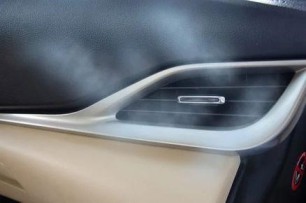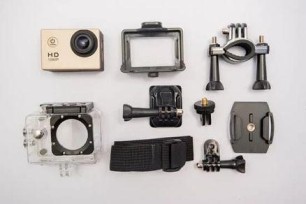General Insurance Blogs, Articles & Updates by - Magma Insurance
Have us call you
- RENEW YOUR POLICY
- BUY NEW POLICY

Are you a lone wolf? Use these ideas to manage your luggage on your bike
Do you like motorbike road trips but always struggle with what to pack and how to pack? Then, you've come to the right place. Allow us to provide you with some of the most practical suggestions for reducing clutter and enjoying your trip rather than constantly worrying about your bags.
Compulsive overpacking might be an issue when travelling alone and having little luggage space on a motorcycle. Unfortunately, when it comes to preparing for a motorbike journey, many riders make several basic mistakes. They tend to overload their bikes with luggage that later affects them in their journey. We've compiled a list of a few practical tips to manage your luggage correctly.
1. Motorcycle travel packs are a good investment:
Bundling your luggage and tying it down with bungee cords may be cost-effective, but it leaves your luggage fully exposed to external conditions. If the weather suddenly turns bad, everything will become moist and wet. You can mount the motorcycle luggage boxes on the side of the motorcycle, but what about transporting heavy items? Heavy items are challenging to handle alone; in this case, you may consider purchasing a motorcycle top box. These are ideal for transporting bulky items like motorbike riding boots and photographic gear.
2. Make a list of your requirements:
The most crucial step in decreasing suitcase clutter is to prioritize your travel needs and prepare accordingly. Recognize that a road trip aims to discover and enjoy the destination rather than be oblivious to day-to-day conveniences.
3. Don't pack everything:
Don't bring everything you need because most of the items you'd need are already available at the local places. Rather than stuffing your baggage with unwanted items, buy some on the way. Disposable batteries, paper napkins, and paper plates for eating are just a few examples that come to mind. Unless you are picky about your food, make purchases to eat and drink on the road to save room.
4. Carry multipurpose stuff:
Rather than bringing specialist stuff, seek objects that may be used in various settings when packing your baggage. Carrying multipurpose products without taking up a lot of room is an excellent strategy to eliminate clutter. For example, you can keep a phone case with a pocket, which you can use to keep some essential documents or cash.
5. Organize at every step of the route:
Most people arrange their belongings at the onset of their journey, but things start to go crazy as the trip goes! Keep things organized at all times. Instead of dumping everything in the bag, properly roll and tuck it. Keep dirty clothes apart from clean clothes and separate large items from small items, especially those susceptible to damage due to excessive dampness or heat.
These tips are proven of great help when it comes to packing for your solo trip. However, packing and riding lessons are not enough to keep you secure. Hence, we also recommend having updated bike insurance for your bike while it is on the road. Compare with hundreds of bike insurance online and get the best suited as per your requirements. Safety while travelling is something you shouldn't skip.
Looking for bike insurance online, click HERE.
Disclaimer: The information provided above is for illustrative purposes only. To get more details, please refer to policy wordings and prospectus before purchasing a policy.

Stinky car interiors? Here's how to get rid of the foul odour
Everyone wants the shiny look of their cars. But what about the smelly interiors? Stinky car interiors can negatively affect your mood and make you feel awful. So, to get rid of foul odours, in this post, we have mentioned some quick tips to help you have a refreshed car and a happy mood while commuting.
1. Vacuum the fabrics:
Most of the time, solid particles tend to get trapped in the car's interior and removing them can be a daunting task. These particles get deep into the fabric. Even after cleaning your car, you still wonder where the smell is coming from.
To get rid of the foul smell, use a vacuum cleaner to clean all the seats and the fabric of your car. This will suck all the gunk and dust particles from your vehicle, leaving your car clean and fresh.
2. Avoid smoking in the car:
If you smoke in your car, you might know how unpleasant the smell is. Smoking leaves behind tar which can stick to the interiors. The smoke can even get in the vent ducts of your air conditioner and become nearly impossible to remove.
To get rid of this, you can wipe off your car with a solution of water and vinegar in a 1:1 ratio with a few drops of liquid detergent added to it. This will remove all of the gunky substance and leave the surface of your car clean. In addition, you can spray some air freshener in the air ducts of your air conditioner to combat the odour.
3. Use baking soda for unpleasant food spills:
Sometimes, you tend to drop something on the carpet or your car's fabric, and the spills being left for a long time start to stink. Even after wiping it, the pungent smell may remain.
To remove the smell of the leftover spill, you should mix a tablespoon of baking soda and three tablespoons of vinegar and use this mixture to rub the mat or car fabric. This mixture will clean your fabric and remove all the unpleasant smells coming from it.
4. Use car deodorants and air cleaners:
This is one of the simplest and quickest ways to keep your car smelling fresh. All you need to do is pick your favourite car perfume and spray it in your vehicle. The air spray molecules will trap the pungent smell and give your car a fresh aroma. There are other similar products that you can explore, like odour patches, air- filters, etc.
5. Get your car a spa:
This will be your last resort if any of the ways mentioned above are not working for you or if the smell is very foul. Next, you should take your vehicle to a professional car cleaning service. The cleaners will clean your car from inside to the outside by washing your seats, mats, air ducts, food trays, etc., making your vehicle look and feel brand new.
We all know how bothersome stinky cars can be. You can follow the tips mentioned above to get rid of the bad odour in your vehicle. But it is not always the dirt that causes the smell. Sometimes these smells can be from leakages. If not addressed correctly, these issues can cause severe damage. So, we would suggest you have car insurance by your side to cover all repairing costs at the garage. Reliable car insurance will keep the stress off your pockets and give your possession the benefits to have a long life.
Click HERE to buy the best car insurance plan.
Disclaimer: The information provided above is for illustrative purposes only. To get more details, please refer to policy wordings and prospectus before purchasing a policy.

Action camera for your bike travel: Nine tips to film the best videos
Action cameras have become a new trend among bikers. You must have seen the riders with one fastened to their helmets or handlebars. One reason being, India is adapting well to the vlogging, thanks to all the biker communities and influencers. With the evolution of action cameras, millennials are interested in capturing their bike rides and sharing the content on social networking websites.
There are some easy steps for you to produce the best-looking shots from an action camera, regardless of riding ability. Read these nine best tips to film better videos through your action camera.
• Choose a suitable device; you may not require an expensive camera and instead need something easier to transport and manage and friendly with all weather conditions.
• Plan out your videos; consider the video's objective, surroundings, the route you'll take, and how you'll film it. Take into account the lighting, the weather, and even the background music.
• The mainstream camera technology can record at 24 FPS (frames per second) for regular speed and at least 60 FPS for slow motion. However, extra-slow motion does not kick in until at least 120 frames per second, and filming at greater frames per second may lower the resolution.
• Set the white balance to auto, although you may set it to specific numbers corresponding to different lighting circumstances (for example, 5500K = daytime). We find that letting the camera make such adjustments for you is always the best option for shooting true colours on a motorcycle.
• With the voice command feature, you can start recording at any time throughout the ride and stop whenever you choose. Even better, you can snap 'Still Photos' while moving.
• 4K recording requires more memory, drains the battery faster, and can be difficult to edit or playback on a computer.
• An SD card in your action camera is always not sufficient. You should keep at least two or more if you're going on a long journey or simply want to capture more films.
• The typical rule of shutter speed is that it should be twice as fast as the frame rate. A shutter speed of 1/60-1/96, on the other hand, is more helpful because it avoids the sickening amount of 'Motion Blur' that might occur when riding a bike.
• To avoid water drops damaging your footage, use a water-repellent glass treatment spray like Rain-X.
Motorcycling has forever changed as a result of action cams. With the rising trend of sharing content on social media platforms, people use action cameras for incredible filming. However, driving bikes on roads brings the great responsibility of getting the proper protection for you and your bike. You can replace your cameras but not your life, so invest in good 2 wheeler insurance.
These tips for getting better footage are only a starting point; if you have something else that works for you, go for it. Beyond any camera setting, position, or attachment, the most important thing to remember is that the one who presses the record button is the real star.
To get the best 2 wheeler insurance, click HERE.
Disclaimer: The information provided above is for illustrative purposes only. To get more details, please refer to policy wordings and prospectus before purchasing a policy.

The complete guide to start learning carpentry
Often people think they need to invest years in mastering the art of carpentry. However, that's not entirely true. With the right mindset and tips, you will learn carpentry in no time! This specialized craft, believed to be one of the world's oldest professions, is commonly employed even today.
Here we have composed a detailed guide for you that will help you in your lessons while you are learning carpentry.
1. Learn about different types of carpentry:
When it comes to carpentry, the only thing that comes to an individual's mind is furniture. But that's not the real deal. There are different types of carpentry, and you can study each one and then pick the one suited for you.
• Formwork: Formwork in carpentry is designed to construct the structure of the object. It comprises the mould in which the concrete is poured while making stairs, walls, pillars, etc. Formwork, made with wood and steel, can be temporary or permanent.
• Framers: Framers work upon repairing and restructuring wood or wood-derived products. The task that you are to do as a framer is to measure, cut, and assemble the wood for industrial or household purposes.
• Cabinet designers:
This form of carpentry requires proficiency with woods and mastery of tools. The job of a cabinet maker is to build, repair and modify wooden structures and furniture.
• Joiners: Joiners, also popularly known as 'finish carpenters,' are more inclined towards wooden ornaments, fine woodworks, and fitting of doors and windows.
2. Take safety precautions:
While working with tools and woodwork, you must learn safety measures like first aid training and have all the safety accessories like gloves, glasses, helmets etc.
3. Measure like a pro:
Measurement is one of the essential skills you need to learn while practising carpentry. You will be cutting several wooden blocks and pieces most of the time. Therefore, double-check your measurement before doing anything.
4. Learn to use carpentry tools:
Tools make a carpenter's work easier, but only if they know how to use them. Carpenters use various tools like handsaws, chisels, mallets, etc. Therefore, it would be best to learn to use them rightly and understand which woodworking activity necessitates what type of equipment.
5. Get trained:
There are plenty of paths to carpentry, and some of these do not even require any qualifications, only skills.
6. Get working experience:
Working on-site on a live project can be one of the best ways to get into the carpentry industry. You can gain plenty of knowledge and skills while you are at work. Apart from that, you can even get into different roles like general construction operations and work with professional carpenters.
7. Take up courses:
There is an abundance of specialized courses you can sign up for learning carpentry. These courses typically provide you with hands-on and theoretical training to make you a better carpenter.
Carpentry is an excellent skill to learn and practice, and you can excel at it if you choose to continue with passion. Although being a skill, it still poses a threat while working. You may get hurt while using a tool or working with heavy objects. So, it is suggested to have the best personal accident policy in India to safeguard your wellbeing and put less stress on your pockets.
Click HERE to find the best personal accident policy in India.
Disclaimer: The information provided above is for illustrative purposes only. To get more details, please refer to policy wordings and prospectus before purchasing a policy.

